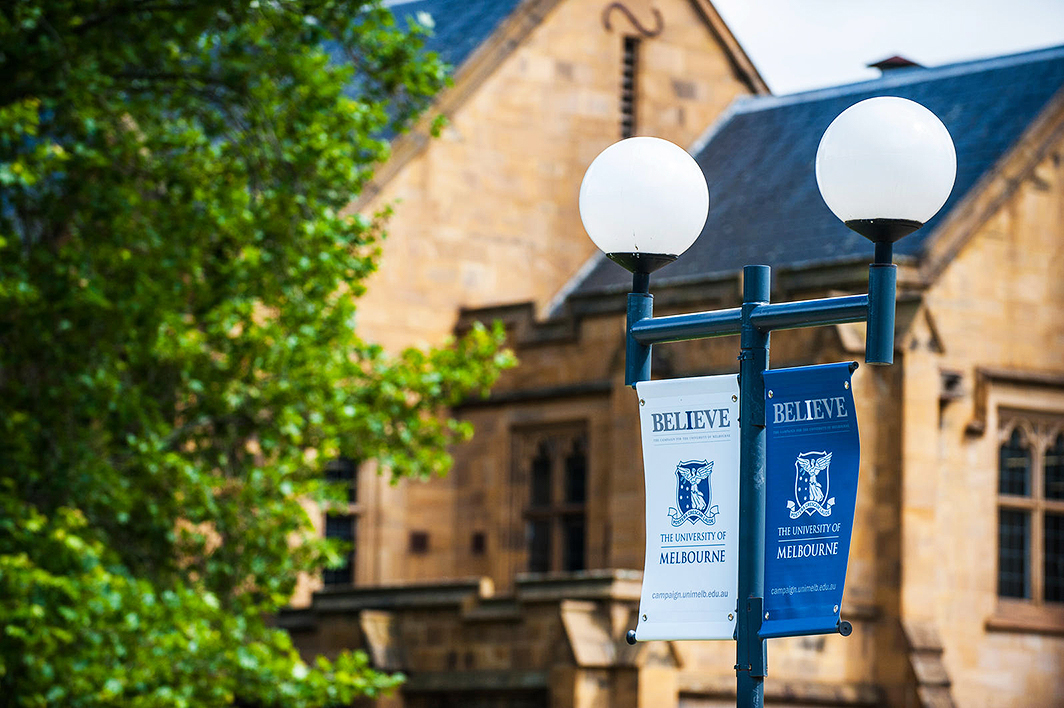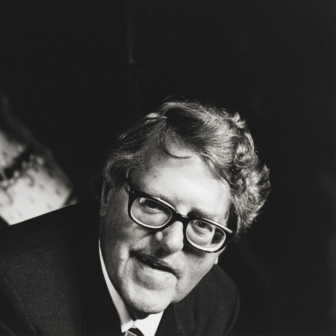The Australian Idea of a University
By Glyn Davis | Melbourne University Press | $27.99 | 277 pages
Glyn Davis is a political scientist by trade and a vice-chancellor by occupation. His latest book is an effort to find a way through a particularly knotty public policy problem, a view from the apex of the system, and the latest shot in a battle that began thirty-odd years ago when the high-prestige universities realised what federal education minister John Dawkins was up to.
Davis brings a new argument to this long-running conflict. If Australia’s public universities are to survive the looming threats of digitally delivered education, globalisation and big capital, we need a new policy framework and new kinds of public institutions. The Dawkins monoculture must give way to a “rich ecosystem of institutional types.” The Australian Idea of a University is about much more than ideas and universities; it is an argument and proposal for reshaping the entire tertiary education system.
All but two of Australia’s forty-odd universities, Davis argues, conform to the model established with the University of Sydney in 1850: they are publicly owned, self-governing, meritocratic, commuter, comprehensive and vocational. As one colony after another commissioned its very own university, each followed the example of Sydney, then of Sydney and Melbourne, then of Sydney, Melbourne and Adelaide, and so on down the line. The model was subsequently elaborated by a growing emphasis on research, and vastly expanded, but successive attempts to depart from the template have all melted away. Davis sees this striking continuity as a case of “path dependency” arising from “an initial choice [that] shapes subsequent options.” Once we start down a pathway (the theory goes) the costs of departing from it exceed the costs of following it, the familiar becomes the ideal, and sheer habit “is a lane cut deep in the landscape.”
In this account of the origins and development of the Australian university — highly recommended, by the way, for its combination of clarity, readability and succinctness — John Dawkins plays a key role. He is remarkable not just for his attachment to the standard model but also for his zeal in applying it to everything in sight. Institutions of all shapes, sizes and specialisations were swallowed by or turned into universities, defined in legislation by Dawkins as conducting both teaching and research in at least three broad fields of study.
The upshot, Davis argues, has proved to be expensive, overweening and cumbersome. Academic staff from the old CAEs (colleges of advanced education) were now required to undertake research as well as teaching, so costs shot up. A huge increase in the number and range of vocational courses at university level put the entire VET (vocational education and training) sector at a discount. And the newly merged, multi-campus, multipurpose, rapidly expanding institutions were too big, too complex and too wedded to one way of doing things.
If Dawkins is the evil genius in this story, his successors have played the part of accomplices, taking over the machinery of the “unified national system” to control both public subsidies and what the universities could charge their customers, putting the universities between a financial rock and a hard place. Moreover, neither direct funding nor prescribed fee levels have borne any clear relationship to actual costs. Davis argues that the universities have been able to survive only by virtue of their successful entry into the international education market and by developing a maze of cross-subsidies — between international and domestic teaching, between cheap-to-deliver courses and expensive ones, between teaching and research.
The universities, and particularly the high-prestige Go8 (Group of Eight) universities, have long agitated to bring this regime to an end, most recently in their doomed campaign to deregulate fees. But now there is a quite new situation, or a new argument at least: the logic of path dependency is up against the logic of creative destruction. The highly regulated Australian public universities must contend with new players who can offer what the market demands without having to do research, or offer a broad menu, or, in an increasing number of cases, run an expensive campus. We already have around 170 non-university providers of higher education, most in IT, business or design, many of them for-profit, some overseas-owned. The Australian online education market is worth an estimated $5.9 billion a year and growing quickly, “an attractive prospect for Silicon Valley players such as the ‘MOOCS-for-credit’ offered by Kadenze or the self-explanatory offering of nopayMBA.com.”
Australian universities know how to play this game. They do it all the time overseas, and with great success, but perversely they are not permitted to play it at home. For now, they remain in a strong position, as protected by legislation and regulation as they are hampered by them. But in the not-so-distant future? What Australia needs, Davis concludes, is a system of regulation and funding that “allows innovation and rewards difference.” It would have four elements.
First, a national framework must embrace “the entirety of post-school education,” including particularly the badly degraded vocational education and training sector.
Second, funding must be geared to the actual costs of teaching and research. As things now stand, “no institution can afford to specialise in a discipline such as engineering or visual arts without the cushion of large law, business, nursing and teaching courses to pay the bills.”
Third, an arm’s-length agency of the kind that operated from the 1950s to the 1980s, first as the Universities Commission and then as the Tertiary Education Commission, should be revived to “oversee policy implementation from vocational education to doctoral programs, and so provide Australia with a coherent framework for higher education.”
Fourth, we need new public institutions, diverse in size, mission, student mix, course offerings, mode and language of instruction, undergraduate and postgraduate offerings, generalist and professional programs.
It is not necessary to agree with every part of Davis’s argument —particularly on the degree of uniformity in the Australian system, on the origins and consequences of the Dawkins revolution, or on the universities as the victims of policy — to support his conclusions and applaud most of his proposals. In fact, the first three of them comprise an unusually coherent and far-sighted “vision” for tertiary education.
Davis is not the first and will not be the last to put proposals along these lines. He is well aware that their boldness means that they have a very hard row to hoe. Ironically enough, they would probably require a Dawkins to be achieved. The Tertiary Education Commission idea is not popular among his colleagues, as he points out. And, as a student of path dependency, he is also aware that the structures of the education system and the processes of policy formation are heavily defended. The two tertiary sectors are funded and controlled in very different ways, the universities by the Commonwealth, the VET sector by a tangled combination of state/territory and federal governments. Prerequisite to Davis’s plan is a Commonwealth buy-out of the states’ stake in VET, an objective that eluded even the indomitable Dawkins.
The transfer of any responsibilities from ministers and departments to statutory authorities has a similarly discouraging history. Departmental heads see statutory authorities as invaders, while the coordinating agencies, Finance, Treasury and Prime Minister and Cabinet, see them as a threat to, well, coordination. For their part, ministers are happy to present a smaller political target but also like the power and profile that comes from handing out money and running things.
For all these reasons, statutory authorities in education have had short and unhappy lives at the national level. Whitlam’s Schools Commission and Curriculum Development Centre barely survived a decade. ANTA (the Australian National Training Authority) had a similarly brief half-life, as did Dawkins’s NBEET (National Board of Employment, Education and Training). Perhaps others created by Gillard and, most recently, by Birmingham will do better? To date, the main exception is the Tertiary Education Commission, which Davis wants to revive. Its relatively long life saw it become a secretive creature of the sector rather than a buffer between it and government. It had little say in any significant change and reform, which remained in the gift of government.
Davis’s underlying idea is the right one, though. What he wants is a field structured and managed in a hands-off way so that “innovation” and “difference” will align players and strategies more closely with variety in demand and mode of delivery. Perhaps the emerging forces of creative destruction will change the political equation in its favour? Or other means will be found to the same end? We can hope so.
The fourth of the Davis proposals is quite different from the first three. It addresses not the framework for tertiary education but its contents. Here the problem is not in the context and prospects of the proposal, but in the proposal itself.
Davis wants new tertiary institutions, and lots of them. We must have more diversity and we must get costs down, he says, and that can’t be done within existing institutions. They’re locked into the teaching–research nexus, and “no government will (or should) contemplate changing [their] status,” so future growth should be channelled away from them and into new institutions diverse in every respect bar one. They must be teaching-only.
These are odd propositions. It is an oddly relaxed and comfortable conclusion to an argument about the gathering forces of “creative destruction.” It is odd to argue that the teaching–research nexus is a central problem and then accept that it will be the dominant mode into the indefinite future. And it is odd to imply that the universities are travelling tolerably well on teaching and research and the relationship between the two.
On the teaching side of the nexus, “quality” seems to have more or less flatlined at a relatively low level ever since the course experience questionnaire was introduced in the 1990s, no small achievement under circumstances discussed below. But the proof of this, like all other puddings, is in the eating, not in the “quality” of the process. Teacher education, for example, enjoys relatively good ratings for “course experience” but not for its usefulness. Between one- and two-thirds of newly qualified teachers have reported feeling ill-prepared for a range of routine teaching tasks, and around three-quarters have declined to say that they felt well or very well prepared “for the realities of teaching.” Principals’ ratings of these new graduates are lower still. The problem is that some of the knowledge needed by teachers is of the university kind and some is not; some “learning to be a teacher” can be done on campus and in advance of actually trying to teach, and some cannot.
The same kind of thing is true, in different ways and extents, across the extraordinarily wide range of occupations now entered via a university course, from chiropractic, Chinese medicine, dietetics and nutritional science to journalism, fashion design, film-making and animation to management accountancy, law and social work to town planning, surveying, architecture and building. The common problem, of which many university leaders are increasingly aware, is in getting the specific mix of on- and off-campus teaching and study, simulation and workplace experience required to generate specific combinations of knowledge and capability required for occupational and workplace success. It is likely that teacher education is somewhere near one end of a spectrum of success in university vocational preparation, some of the health-related occupations — advantaged by mystique, lavish funding and the threat they pose to life and limb — at the other.
If the graph is more or less flat on one side of the nexus, on the other it climbs steeply. The massive growth in research output is usually seen as a response to the demands of a knowledge-based economy, thus conveniently implying that it is functional, indeed fundamental to the entire social order. But the research boom also owes much to the universities’ anxiety about differentiating themselves from lesser breeds and, more recently, to the development of research as a global industry with its own “economy.”
This growth in research has been purchased at the cost of teaching, partly in class sizes and staff–student contact, mainly by bringing in “sessional” staff employed on short-term and often part-time contracts to fill the vacuum left by academics rushing to spend more time on research. Steadily increasing cynicism and resentment within universities is matched by increasing scepticism in the laity about the point of all this research, and about whose interests are actually being served. The pressure is building not just for measurement of research “quality” or impact, or even for cost–benefit analysis, but for a really serious effort to understand the opportunity costs of it all.
In short, there are real problems on both sides of the teaching–research nexus, and in the nexus itself. What to do?
The answer is both obvious, and complicated. The obvious part: the flow of resources from teaching to research should be reversed.
The complications? Doing a better job of “teaching” is less a matter of getting academics to “teach” better than a matter of changing the shape of learning programs. The problem is structural, as new teaching graduates recognise when they complain about weak links between theory and practice in their training, and the lack of relevance of much “theory.” Davis’s own university took the same point when it set up (with Davis’s very active support) MTeach, a new kind of teacher-education program organised around extended periods of well-supervised practice, plenty of opportunity to digest the lessons of experience, and a formal curriculum derived mainly from practice-focused research. It works, and others are moving in the same direction — but it is not an easy thing to do.
Another complication: shifting effort from research back to teaching can easily be done in ways that compound the underlying problem of getting parity of esteem and reward for teaching and research. The big problem in the Dawkins plan wasn’t so much in the imposition of uniformity (as Davis argues) but in the kind of uniformity imposed. The universities’ privileging of research over teaching extended to embrace the whole of the higher education sector. Thus, “underperforming” academics are offered a “teaching-only” appointment.
A third complication: could and should a campaign to restore teaching to parity proceed without dealing with the employment conditions of those doing the teaching that “real” academics don’t want to do?
And a fourth: would putting effort back into teaching necessarily mean reduced research output, a lower international ranking and lower international enrolments and revenues?
Then there’s the complication of cost. Melbourne’s MTeach relied mainly on extra funding rather than a shift of the “load” from research to teaching, and it cost around $5000 per year per student more than the conventional campus-based programs. Good vocational preparation is expensive, even if “industry partners” can be got to contribute, as they should. Contract teaching staff are there because they’re cheap and “flexible.” Putting them on decent contracts would cost. Perhaps most expensive of all, if “teaching only” is not to mean “can’t do research,” a teaching-only career has to compete for status, interest and prospects with research, and that also costs. “Teaching only,” whether inside universities or in new institutions of the kind Davis wants, is expensive, unless it is done badly, in which case the hated binary system would be restored, Davis’s vehement denials notwithstanding.
Despite these many difficulties, an increasing number of universities are pursuing the teaching-only option. A closely evidenced study by a former university deputy vice-chancellor found “a consistent upward trend” in numbers of teaching-only academics. Most of this growth has been “opportunistic rather than strategic,” pursued for good and bad reasons, with both good and bad results. These Australian developments belong to Davis’s “creative destruction” process, a worldwide “unbundling” of functions performed by academics and by universities.
Much of this is of a piece with Davis’s analysis. Why does it not find its way into his prescription for universities? It is partly an artefact of his angle of view. From his lofty perch, the system and its institutions fill most of the field of vision. The wrinkled sea beneath him crawls. But there is more to it, and to Davis, than that. He is a prominent and thoughtful contributor to debates on research and research policy, and an active reformer of university teaching. His comprehension of the plight of the VET sector suggests an unusually enlightened self-interest — where “self” refers to universities of the Melbourne kind — but self-interest nonetheless.
This combination of perspective and interests condenses in the “diversity” catchcry, and in the argument that what we need is “diversity” all around the universities but not inside them. The Australian Idea of a University was written by the vice-chancellor of one Go8 university, was launched in passionate support of the diversity principle by the chancellor of another Go8 institution, and carries a note of emphatic support for the same cause by the former chancellor of yet another member of the Go8. That the book rules out any change in “the status of existing institutions” and ignores the possibility of diversity within them will encourage the perception that “diversity” is being used here as it has been used for many years in schooling, as a flag of convenience for the beneficiaries of history, and will in that way, and very unfortunately, discredit or distract from his larger proposals. ▪




